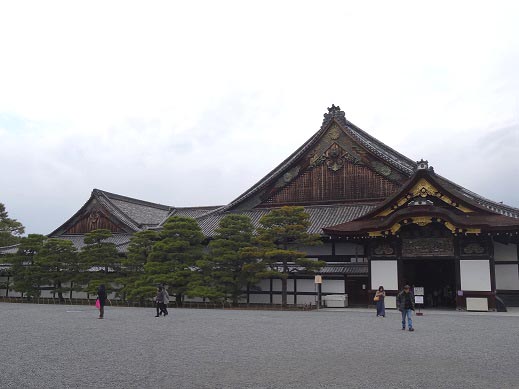In 1603, TOKUGAWA Ieyasu officially received the assignment of hShogun" by the Emperor. This ceremony was held at "Ninomaru Goten".
With this assignment, TOKUGAWA Ieyasu started his government, "Edo Bakufu".
Also in 1868, TOKUGAWA Yoshinobu, the 15th "Shogun", gathered senior retainers of feudal clans at "Ninomaru Goten".
At this conference, TOKUGAWA Yoshinobu declared that he would return the assignment of "Shogun" to the emperor.
Ninomaru Palace of Nijyo Castle is also well-known for "Uguisu floor".
"Uguisu" means a nightingale in Japanese. "Uguisu floor" is a Japanese method of laying a wooden hallway floor.
Planking of hallway floor was specially sprung to emit creaking noises when someone walked on it.
This noise sounds like singing of a nightingale.
Ninomaru Garden is located to the west of Ninomaru Palace.
This garden was originally made by KOBORI Enshu, who was well-known as an expert in garden making at the beginning of the Edo Age.
The garden is one of the typical traditional Japanese gardens with a pond in the center.
In late autumn, the leaves of ginkgo trees in ruins of Nijyo Castle change their color.

 Home Page in Japanese: "Shane's HomePage"
Home Page in Japanese: "Shane's HomePage"

 Home Page in Japanese: "Shane's HomePage"
Home Page in Japanese: "Shane's HomePage"